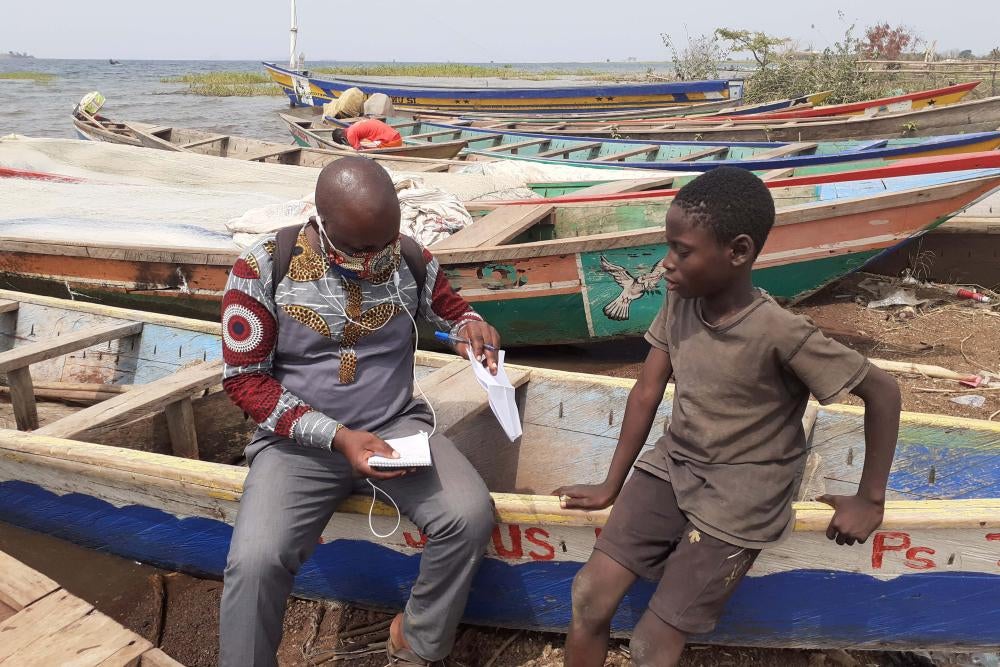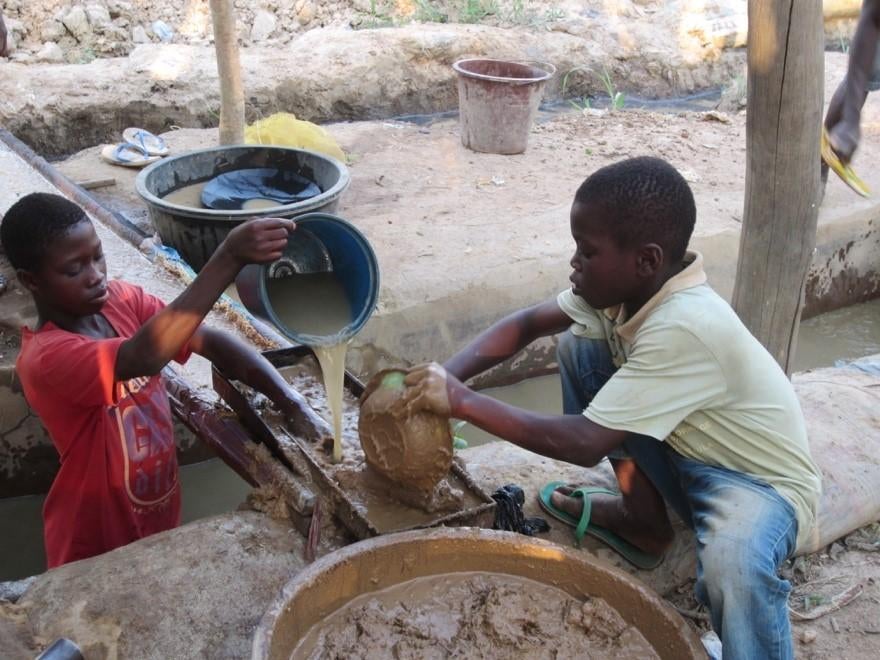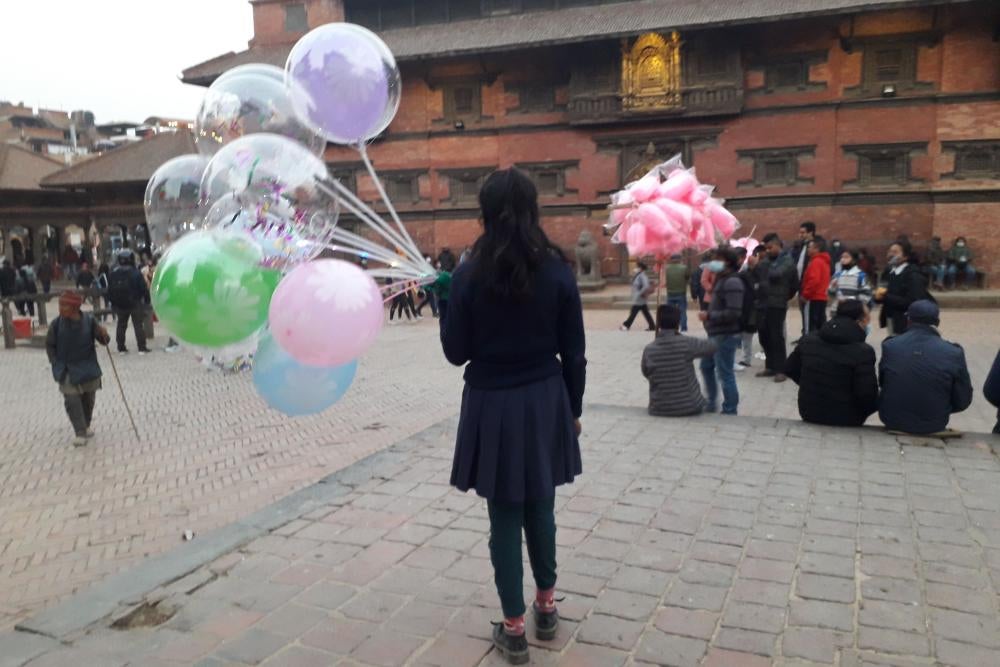- The unprecedented economic impact of the Covid-19 pandemic is pushing children into exploitative and dangerous child labor.
- Many children feel they have no choice but to work to help their families survive, but a rise in child labor is not an inevitable consequence of the pandemic.
- Governments and donors should prioritize cash allowances to enable families to maintain an adequate standard of living without resorting to child labor.
(New York) – The unprecedented economic impact of the Covid-19 pandemic, together with school closures and inadequate government assistance, is pushing children into exploitative and dangerous child labor, Human Rights Watch said in a report released today in advance of the World Day against Child Labor on June 12, 2021. Governments and donors should prioritize cash allowances to families to protect children’s rights and enable families to maintain an adequate standard of living without resorting to child labor.
The 69-page report, “‘I Must Work to Eat’: Covid-19, Poverty, and Child labor in Ghana, Nepal, and Uganda” was co-published with Initiative for Social and Economic Rights (ISER) in Uganda, and Friends of the Nation in Ghana. Researchers examined the rise in child labor and poverty during the Covid-19 pandemic, and the pandemic’s impact on children’s rights. Children described working long, grueling hours for little pay after their parents lost jobs or income due to the Covid-19 pandemic and associated lockdowns. Many described hazardous working conditions, and some reported violence, harassment, and pay theft.
“Many children feel they have no choice but to work to help their families survive, but a rise in child labor is not an inevitable consequence of the pandemic,” said Jo Becker, children’s rights advocacy director at Human Rights Watch. “Governments and donors should scale up cash allowances to families to keep children out of exploitative and dangerous child labor and protect children’s rights to education and an adequate standard of living.”
The researchers interviewed 81 working children, some as young as 8, in Ghana, Nepal, and Uganda. The children worked at brick kilns, carpet factories, gold mines, stone quarries, fisheries, and in agriculture. Some work as mechanics, rickshaw drivers, or in construction, while others sell items on the street.
The vast majority of children interviewed said that the pandemic and associated lockdowns had negatively affected their family income. Their parents lost jobs when businesses shut down, lost access to markets due to transportation restrictions, or lost customers due to economic slowdowns. Many children entered the workforce for the first time to help support their families. Some said they decided to work because their families didn’t have enough food. Some kept working even after the situation eased.
“I started working because we were so badly off,” a 13-year-old girl in Uganda told ISER. “The hunger at home was too much for us to sit and wait.”
Some children described work that was clearly hazardous. In Uganda and Ghana, children described carrying heavy bags of ore at gold mining sites, crushing the ore with hammers, breathing in dust and fumes from processing machines, and handling toxic mercury to extract gold from the ore. At stone quarries, children reported injuries from flying stones, including sharp particles that got into their eyes. Children showed researchers their cuts from the machete-like tools they used to clear fields or the sharp edges of sugarcane stalks. Others described carrying heavy loads.
In each of the three countries, more than one-third of the children interviewed worked at least ten hours a day, some seven days a week. Several children in Nepal said they worked 14 hours a day or more in carpet factories.
Most were paid very little, if at all. More than a quarter said that their employer sometimes withheld wages or paid less than was promised. In Ghana, a 12-year-old said that he worked 11 hours a day carting fish to market, but was paid only 2-3 cedis per day (US$0.34-0.52). “On many days, I go very hungry,” he told Friends of the Nation.
School closures have contributed to an increase in child labor worldwide. Most children interviewed had limited or no access to distance learning. Some lost access to free school meals. Some have dropped out of school permanently, while others continued to work even after their schools reopened.
Another significant driver of child labor is a parent’s illness, disability, or death. As the global death toll from Covid-19 has topped 3.3 million, hundreds of thousands of children worldwide have lost parents and may be forced to become their family’s primary wage earner.
Before the pandemic, countries had made remarkable progress in reducing child labor. According to the International Labor Organization, the number of children in child labor decreased by approximately 94 million between 2000 and 2016, a drop of 38 percent. In many countries that successfully reduced child labor, governments provided cash allowances to help families and reduce pressure on children to work. However, 1.3 billion children – most in Africa and Asia – are not covered by cash allowance programs.
The researchers focused on Ghana, Nepal, and Uganda because they have made significant progress in reducing poverty and child labor, and as “pathfinder” countries, have committed to accelerate efforts to eradicate child labor by 2025 in line with the United Nations Sustainable Development Goals. However, each has lagged behind regional peers in using cash allowances to address the Covid-19 crisis.
In response to the Covid-19 pandemic, the vast majority of countries have provided emergency relief, including cash assistance for families. In many cases, however, the assistance has fallen far short of the need. Most cash assistance programs have been short-term, or consisted of a single payment.
“For many families with children, government assistance in response to the pandemic has been far too little to protect their children from dangerous and exploitative work,” Becker said. “As millions of families struggle financially due to the pandemic, cash allowances are more important than ever to protect children’s rights.”


















